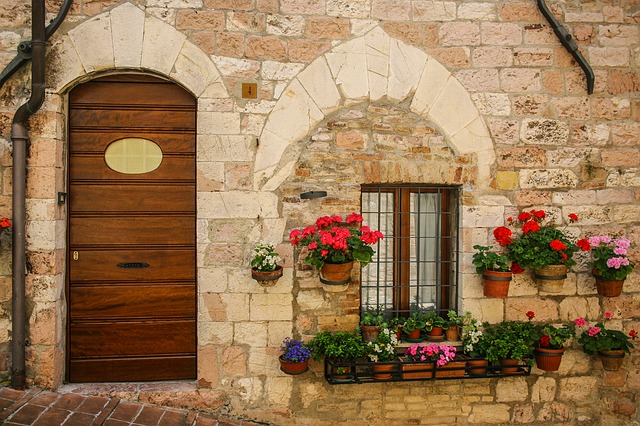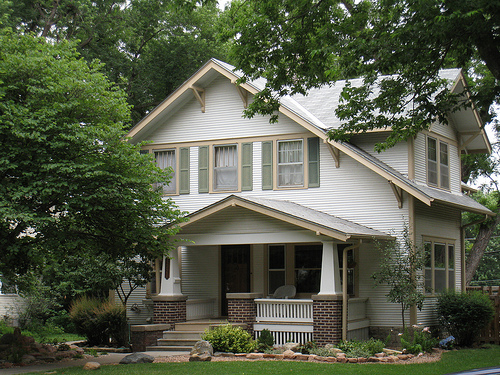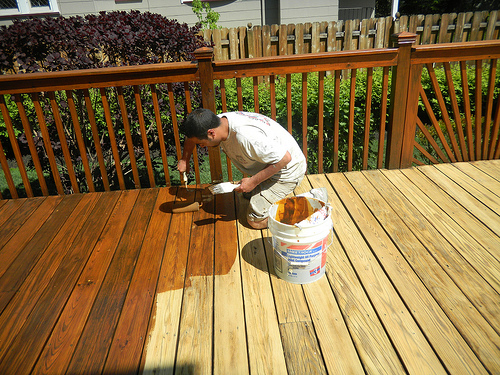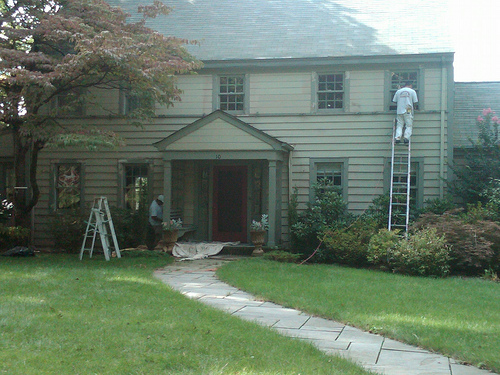You Should Make It A Priority To Store Paint In A Safe Manner!It does not matter whether you are living alone or with kids or have pets at home, it is highly important that you store your paint in a proper manner. You should store paint well and make sure the paint cannot be easily accessed by the children and pets. There are times when people simply pop the lid of the paint back on and place it in the basement or attic and forget about it till the time they need to use it again. And then when you plan to paint your house, you spend the entire day in rummaging for the paint boxes, then fiddle with the lid for the next half an hour and God knows what you find when you finally manage to open the can successfully.
Safe paint storage is not just about keeping yourself and your loved ones safe from any kind of hazard but it is about storing it such a way that you can use it in the near future as well. Here are a few things that you must consider when storing paints in your home.
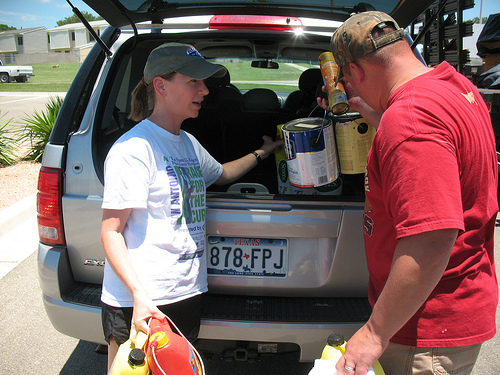
Composition of paint and how it becomes hazardous
Paints generally have four components namely, solvent, additives, pigment and resin. Following is a description of each of the components:
• Solvent
This is the ingredient that keeps the paint in its liquid form. The paint only gets dried or lumpy when the solvent has evaporated from the paint. Solvent is made with petroleum distillate. The hazardous elements ingredients in the solvent include mineral spirit, xylene and toluene. In latex paint, water is the main solvent ingredient.
• Resin
Resin happens to the prime ingredient of paint. It is the cover or the film that is created when you coat an object with paint. Although resin itself is considered to be nonhazardous, it can become dangerous when other ingredients are added. The basic ingredients of resin include acrylic, synthetic or linseed.
• Pigments
It is because of the pigments, the color in each can of paint is created. This is not it; pigments tend to crease the covering power of paint and the opacity of paint at the same time. The prime ingredients of pigments include iron oxide, titanium oxide, calcium sulfate, silicates and clay. Generally these types of pigments are considered to be nonhazardous but when cadmium and arsenic is added, it becomes toxic for pets and people.
• Addictives
There are some paints in which special stabilizers are added. This is done to protect the paint from becoming dry in the can. These additives are also used for assisting in paint coating and for keeping the paint thick. The chemicals and ingredients that create these factors may have some hazardous or non hazardous material in them.
For instance, latex paint has mercury based fungicide preservative that is added to prevent the can becoming dry when stored. It also keeps away certain types of mold as well. Mercury happens to be quite toxic. Most of the paints that contain mercury are only designed for outdoor use. If you have a mercury paint solution to paint, it is very important that you never use it indoors.
A word on lead paint
Lead paints were used in seventies as they were quite common. If you ever come across lead paint in your store, do not ever use it. Simply throw it away and get yourself some new paint. If you are not sure whether the paint you have has lead or not, the easiest thing you can do is to contact a residential painter or the local health department and ask them. Lead is quite poisonous not only when you breathe but can lead to lethal results when touched.
How to check if the paint is useable or not
If you have a can of paint in your store and you want to know whether it can be used, it is quite easy to figure it out. You just need to open the can and stir it up. If upon stirring you see that the paint has the consistency of scrambled eggs or you see that the oil and paint will not mix together, then you must throw the can away.
Oil based paints can easily last for almost fifteen years, if stored properly. Similarly, latex paint can be easily kept for ten years or so but they should not have been previously frozen or thawed. Otherwise, they will be in a bad shape when you use them.
Tips for storing paint
By following a few simple steps, you can store your paint cans for a long period of time:
• Take plastic and put it over the lips and mouth of the can. Just ensure that there is no paint in the lips of the can. Place the lid over the plastic wrap.
• Always remember to store the paint in upside down manner. This way, air will not get into the can that will later create bubble and dry the paint.
• Always store the cans in dry area.
It does not matter whether you are living alone or with kids or have pets at home, it is highly important that you store your paint in a proper manner. You should store paint well and make sure the paint cannot be easily accessed by the children and pets. There are times when people simply pop the lid of the paint back on and place it in the basement or attic and forget about it till the time they need to use it again. And then when you plan to paint your house, you spend the entire day in rummaging for the paint boxes, then fiddle with the lid for the next half an hour and God knows what you find when you finally manage to open the can successfully.
Safe paint storage is not just about keeping yourself and your loved ones safe from any kind of hazard but it is about storing it such a way that you can use it in the near future as well. Here are a few things that you must consider when storing paints in your home.

Composition of paint and how it becomes hazardous
Paints generally have four components namely, solvent, additives, pigment and resin. Following is a description of each of the components:
• Solvent
This is the ingredient that keeps the paint in its liquid form. The paint only gets dried or lumpy when the solvent has evaporated from the paint. Solvent is made with petroleum distillate. The hazardous elements ingredients in the solvent include mineral spirit, xylene and toluene. In latex paint, water is the main solvent ingredient.
• Resin
Resin happens to the prime ingredient of paint. It is the cover or the film that is created when you coat an object with paint. Although resin itself is considered to be nonhazardous, it can become dangerous when other ingredients are added. The basic ingredients of resin include acrylic, synthetic or linseed.
• Pigments
It is because of the pigments, the color in each can of paint is created. This is not it; pigments tend to crease the covering power of paint and the opacity of paint at the same time. The prime ingredients of pigments include iron oxide, titanium oxide, calcium sulfate, silicates and clay. Generally these types of pigments are considered to be nonhazardous but when cadmium and arsenic is added, it becomes toxic for pets and people.
• Addictives
There are some paints in which special stabilizers are added. This is done to protect the paint from becoming dry in the can. These additives are also used for assisting in paint coating and for keeping the paint thick. The chemicals and ingredients that create these factors may have some hazardous or non hazardous material in them.
For instance, latex paint has mercury based fungicide preservative that is added to prevent the can becoming dry when stored. It also keeps away certain types of mold as well. Mercury happens to be quite toxic. Most of the paints that contain mercury are only designed for outdoor use. If you have a mercury paint solution to paint, it is very important that you never use it indoors.
A word on lead paint
Lead paints were used in seventies as they were quite common. If you ever come across lead paint in your store, do not ever use it. Simply throw it away and get yourself some new paint. If you are not sure whether the paint you have has lead or not, the easiest thing you can do is to contact a residential painter or the local health department and ask them. Lead is quite poisonous not only when you breathe but can lead to lethal results when touched.
How to check if the paint is useable or not
If you have a can of paint in your store and you want to know whether it can be used, it is quite easy to figure it out. You just need to open the can and stir it up. If upon stirring you see that the paint has the consistency of scrambled eggs or you see that the oil and paint will not mix together, then you must throw the can away.
Oil based paints can easily last for almost fifteen years, if stored properly. Similarly, latex paint can be easily kept for ten years or so but they should not have been previously frozen or thawed. Otherwise, they will be in a bad shape when you use them.
Tips for storing paint
By following a few simple steps, you can store your paint cans for a long period of time:
• Take plastic and put it over the lips and mouth of the can. Just ensure that there is no paint in the lips of the can. Place the lid over the plastic wrap.
• Always remember to store the paint in upside down manner. This way, air will not get into the can that will later create bubble and dry the paint.
• Always store the cans in dry area.
